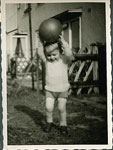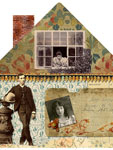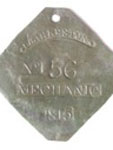Joe Jelen on Digital Timelines

History teachers have long asked students to create timelines to help conceptualize and understand historical events. Student-created timelines were often limited by the space they occupied. Often teachers would have students focus on a few events and ask them to write very small on their notebook paper to squeeze in events. Clever teachers invested in rolls of butcher paper or banner paper to have students create long timelines. But thanks to today's web designers, timelines are no longer limited in space. Using free timeline builders online allows students to see concepts over time without the constraints of paper and a straightedge.
I have always liked using timelines in my classroom to help students see change over time and help students remember chronology (an oft-heard complaint for students of history).
My students have made standard social, political, and economic timelines of eras of U.S. history in preparation for exams. My students have also created the popular timeline of events leading up the Civil War. I thought myself a clever teacher using large rolls of butcher paper for these timelines to maximize the number of events included and student participation. It was not until I sat down to read the new National Curriculum Standards for Social Studies put out by the National Council for the Social Studies that I saw another way for students to create timelines. "Learners demonstrate understanding by using graphic software to create a timeline depicting a scientific idea of the evolution of a technological innovation, and predicting how that idea or technology might develop in the next 10–20 years." (NCSS 57) With this, I began my search for digital timeline-building websites.
A quick search revealed lots of possibilities for creating timelines online for free. I had to spend a little time playing with each one to find the site that would best work for my needs and students. There are sites that are better tailored to elementary students. There are also those that are more powerful, but less user-friendly. This site provides a nice review of the various digital timeline sites available for free. My project required students to create events with years BCE and CE, which limited the sites I could use and may be a consideration in your site choice. You may also wish to consider what types of multimedia features you would like students to be able to embed in their timelines. Some sites offer the ability to embed pictures and videos. Most timeline-building sites allow users to embed their timelines in blogs or other websites, making sharing timelines easy.
Adapting the product recommended by NCSS, I asked students to create a timeline showing the impact of the Scientific Revolution on a specific field of modern science. To go one step further, students were to make some predictions about future developments in that field (i.e. chemistry, geology, meteorology, etc.). My students quickly caught on to the user interface for the timeline builder and in three 45-minute class periods had researched and created a timeline specific to their field of modern science. You can see an example of one student's timeline here. With more time and practice, I believe that my students will become better at creating richer timelines. After they had created their timelines, students were able to view each others' and comment on them. Ultimately, we created a class timeline merging events from each student's timeline to see the broader impact of the Scientific Revolution.
Digital timelines allow teachers greater flexibility and creativity in assigning timeline activities to students over the old paper timelines. They also allow students to collaborate in a way that fosters chronological thinking and in-depth analysis of eras in history. I hope that you will experiment with digital timelines and share the creative ways you use them in your classroom.
National Council for the Social Studies. "National Curriculum Standards for Social Studies." Silver Spring, MD: NCSS, 2010: 57.
Looking for more ideas for teaching with tech? Try Joe Jelen's earlier entry on teaching with document cameras, or check out our Digital Classroom section for articles and videos demonstrating more tools and techniques for using technology in your classroom.
Conventional timeline techniques can be used with digital timelines—the Teaching Guide Teaching with Timelines makes suggestions you can easily adapt to digital tools. EdTechTeacher also overviews digital and conventional timeline tools and strategies.






